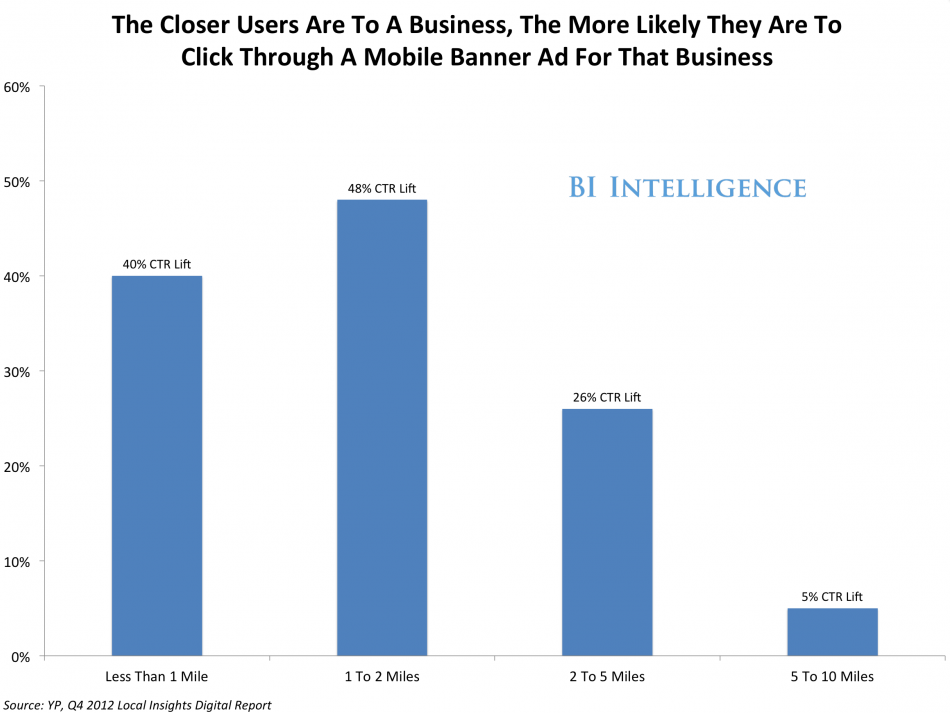By adaptive - July 9th, 2013
With mobile data devices providing an ecosystem of connections, brands should be doing more to leverage location-based marketing across their social media networks
With over a billion smartphones now in the hands of consumers, and the fact that over three-quarters of these devices have GPS, location-based marketing now has an ecosystem that can be leveraged to deliver targeted marketing messages.
The ability to reach consumers who are on the move with focused messages personalised for them is a powerful paradigm in social media marketing that corporations needs to develop as a priority, with Juniper Research forecasting the market to be worth over $12 billion by next year.
A TNS survey from last year concluded: “Almost one fifth (19%) of the world’s six billion mobile users are already using location-based services (LBS), with more than three times this number (62%) aspiring to do so in the future. Navigation with maps and GPS is currently the most popular motivation behind LBS uptake (46%), but there is growing interest in more diverse activities, with 13% of current social network users ‘checking-in’ through platforms like Foursquare, or Facebook Places – a 50% uplift on 2011.
“LBS users are increasingly using services to enrich their social lives, with one in five using it to find their friends nearby. Around a quarter use the technology to find restaurants and entertainment venues or check public transport schedules (19%) and 8% to book a taxi.”
James Fergusson, Managing Director, Global Technology Sector, TNS commented: “We are really starting to see location based services ‘come of age’. People are realising that sharing their location often offers some kind of reward in terms of a discount or deal. It is the combination of time and context – directing people towards a deal when they can easily redeem it – that unlocks a powerful tool for marketers to develop precise targeting approaches.”
Often however, geo-locational marketing will only take place with general location-based information such as postcode or the area IP address of the nearest mobile phone tower. Whereas, more location-based marketing must deliver brand information linked to retail locations.

Foursquare have of course been pioneering this level of customer interaction, and it seems to be working with the company posting a 10-30% increase in traffic each month. One of the criticisms that are levelled at these types of services is that if your business isn’t a high street retailer, coffee shop or restaurant, what use is geo-marking?
Clearly businesses in these market sectors should be building their Foursquare profiles as fast as possible. However, this doesn’t preclude other businesses from leveraging these services as well. What this added layer of personalisation delivers is enhanced local search – something that Google itself has been pushing for some time with the fact that 94% of smartphone users have searched for local information adding even more urgency to this component of a corporation’s marketing strategy.
Staying loyal
Businesses have understood for decades that loyalty is where high levels of ROI reside. Tesco and its Clubcard showed business how loyalty programs can drive real business growth, and determine massive customer loyalty in the process. Social media and the fact that consumers now have a digital access point in their pockets means that loyalty now takes on a whole new persona.
The Entrepreneur outlined a project that could have far reaching consequences for location-based marketing in the future: “A research project at Carnegie Mellon University in Pittsburgh called Livehoods aims to track information from 18 million public tweets and check-ins to collect geographic and demographic data about a location and the person visiting that location, essentially to tell the story of neighbourhoods of a city. These snapshots of the various areas could potentially give businesses a way of targeting their product and advertising to the right customer based on the demographics of a region.”
Linking a brand and its retail partner to what are in effect passing customers may seem a haphazard approach to marketing, but this misunderstands how consumers are now approaching how they discover retailers when they want to buy. Already payment platforms such as Apple’s Passbook, Gyft and Google Wallet are offering seamless interactions on the move. The last component of this customer journey is to reach them with timely and of course geo-targeted messages to trigger a purchase journey.
Also, eMarketer points out: “As social media gives average consumers a larger reach, brand advocates of all types and levels have emerged, including social media influencers, industry experts, brand employees, and consumers who use recommendations, blog posts and “likes” to gain discounts, deals and, in some cases, payments. For some of these consumers, recommending products and being an advocate is a new activity, and one that is growing as they participate in more social sites.” Placing a new location-based layer onto these relationships is the next logical step.

Social media of course is the linking network that will enables brands and retailers to develop geo-social campaigns that will have perhaps a couponing exercise at their heart, with local store redemption driving localised traffic. The ability to connect with highly specific groups in narrow locations is a burgeoning marketing channel, but one that will rapidly evolve.
